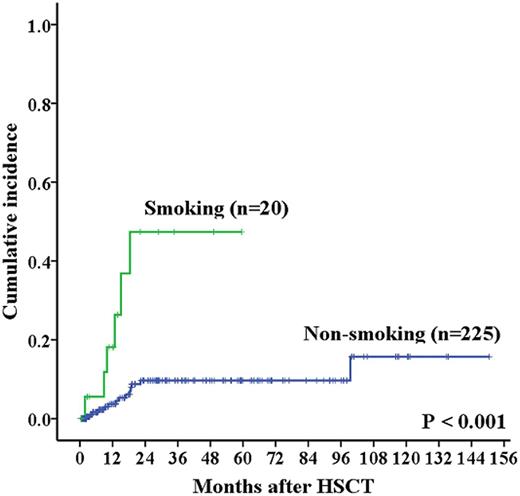Abstract
Introduction:
Patients with acute leukemia exposed higher risk for developing invasive fungal infections and the invasive fungal infection is also an important cause of morbidity and mortality during allogeneic hematopoietic stem cell transplantation (allo-HSCT). In addition to candida species, the invasive mold infection (IMI) is most common in invasive fungal infections and the incidence rate is increasing in recent years. Although recent diagnostic approach and treatments for IMI are advanced, the prognosis remains poor. It is essential to understand the risk factors for developing IMI among acute leukemia patients undergoingallo-HSCT. Here, we conducted a retrospective study to demonstrate demographics, microbiology, and risk factors for the development of IMI among 245 adult acute leukemia patients undergoingallo-HSCT at our institution during a 10-year period.
Method
We reviewed 245 adult acute leukemia patients undergoingallo-HSCT from January 2003 to December 2014. Clinical characteristics including age, sex, underlying disease, type of allogeneic transplant, conditioning regimens, European Group for Blood and Bone marrow Transplantation (EBMT) risk score, and presence of acute graft-versus-host disease (aGVHD) or chronic GVHD (cGVHD) were collected and analyzed. Cox proportional hazard model was adopted to explore the independent risk factors for IMI development. The Kaplan-Meier method was performed to estimate the cumulative incidence and the curve was compared using the log-rank test
Results
Twenty out of 245 patients developed IMI during study period and the median time to onset after transplantation was 391 days (interquartile range, 220-552 days). The cumulative incidence of IMI in this cohort was 1.9 %, 5.1%, and 12.8% at 6 months, 12 months, and 24 months, respectively. Aspergillus species were the most common and presented in 55% of mold infections. The significant risk factors to predict mold infection after transplantation (Table 1) were smoking (hazard ratio [HR] 4.28, 95% confidence interval [CI] 1.40-13.12; P=0.011), EBMT risk score > 2 (HR 4.37, 95% CI 1.35-14.09; P=0.013), and extensivecGVHD(HR 3.10, 95% CI 1.20-8.00; P=0.019). The cumulative incidence of mold infection in smokers was significantly higher than non-smokers (log-rank P < 0.001) and the Kaplan-Meier curve was shown in Figure 1.
Conclusion
We identified three risk factors-smoking, EBMT risk score > 2 and extensivecGVHDto predict IMI among acute leukemia patients undergoingallo-HSCT. Smoking may damage respiratory tract epithelium as well as defense-microorganism mechanism and it would lead to IMI easily duringallo-HSCT. This cohort study suggests that early identification of high-risk patients and to provide better prevention strategies would reduce the incidence and severity of IMI in these patients.
No relevant conflicts of interest to declare.
Author notes
Asterisk with author names denotes non-ASH members.



This feature is available to Subscribers Only
Sign In or Create an Account Close Modal